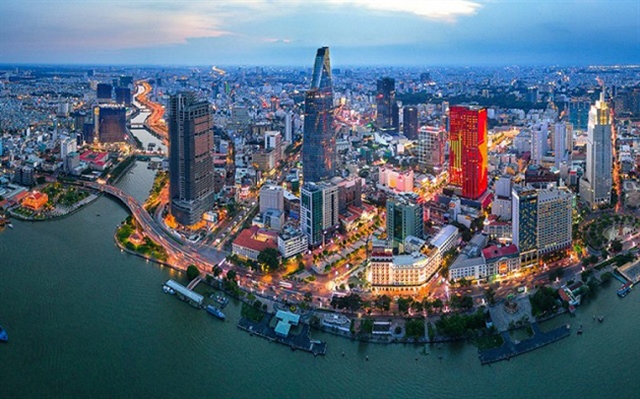 Society
Society


|
| A view of the Thủ Thiêm new urban area. The city People’s Council has approved a resolution on the city’s medium-term public investment plan over the next five years worth VNĐ687 trillion (US$29.8 million). VNA/VNS Photo Mạnh Linh |
HCM CITY — HCM City should focus investment on flood-prevention, environmental protection, public transport and traffic-congestion projects to improve both quality of life and economic growth, the city People’s Council has said.
The council has also asked the city to focus on projects related to natural disasters and pandemic prevention, climate-change adaptation, and others to ensure social security.
The council last week approved a resolution on a medium-term public investment plan over the next five years worth VNĐ687 trillion (US$29.8 million). From 2021-2025, the city is expected to implement more than 5,664 projects using funds from the central and local budgets.
The 10th People’s Council meeting also passed a resolution on investment for the expansion of National Road No 50 worth VNĐ1.5 trillion ($65.2 million). Work on the 6.92km National Road will be implemented over four years.
Seaport infrastructure fee delayed
The People’s Council has agreed to delay fee collection for use of seaport infrastructure for goods transshipment and transit to October 1, instead of July 1, following a proposal by the Department of Transport.
The Việt Nam Inland Waterways Administration had earlier proposed free use of seaport infrastructure to support waterway transport businesses affected by the pandemic.
The move would benefit 150,000 containers of transit goods at the city's seaports (nearly 2 per cent of the container volume through the city seaports each year). These kind of goods are transported within the seaport’s internal area without causing traffic jams, and do not require the use of public works and services in the seaport border gate area, the waterways administration said.
Most businesses affected by the COVID-19 pandemic said the fees would raise operating costs.
Experts have warned that Việt Nam’s logistics costs are higher than most countries in the Southeast Asian region, affecting competitiveness of enterprises already affected by the outbreak. They said such fees should not be collected until at least the end of this year.
The fees for goods temporarily imported for re-export, goods deposited in bonded warehouses, transit and transshipment goods, and imported and exported goods declared outside the city would be VNĐ4.4 million ($190.8) per 40ft container and VNĐ2.2 million for a 20ft container.
HCM City has four major port areas, Cát Lái, Nhà Bè, Hiệp Phước and Sài Gòn River. Last year, the total output of goods through the city’s seaports was 170 million tonnes, and is forecast to increase to nearly 237 million tonnes by 2030.
The large volume of goods transported through ports is putting huge pressure on existing transport infrastructure. Road networks surrounding seaports have not developed commensurately, resulting in heavy congestion, air pollution, and an increase in logistics costs.
The seaport infrastructure fees will be used to build bridges and upgrade major roads near seaports to reduce traffic congestion and facilitate cargo transport.
About VNĐ3.2 trillion ($138.8 million) of infrastructure fees at seaports is expected to be collected a year, and the revenue could increase in the following years based on the volume of goods, according to the Transport Department. — VNS
From 2021-25, the city plans to allocate nearly VNĐ14 trillion to be sourced from the central budget and foreign investment, for the following projects: - Upgrade a part of the left riverbank of the Saigon River (from Cầu Ngang canal to the new Thủ Thiêm new urban area) worth VNĐ38 billion. - Build a new HCM City Children’s Hospital, VNĐ432 billion. - Improve the environment of Tham Lương – Bến Cát – Nước Lên canal, VNĐ4 trillion - Build the An Phú intersection in Thủ Đức City VNĐ1.8 trillion - Improve the water environment in the basin of Tàu Hủ - Bến Nghé - Đôi – Tẻ canal (second phase), VNĐ500 billion - Improve environmental sanitation (second phase), VNĐ1.9 trillion - Develop green traffic development (SECO), more than VNĐ245 billion. - Upgrade sewer lines, using advanced technology without open excavation, more than VNĐ397 billion. - Improve the vocational education sector, more than VNĐ218 billion. - Build urban railway No 1 from Bến Thành market in District 1 to Suối Tiên Theme Park in Đức City, VNĐ2.484 trillion - Build the second metro line from Bến Thành market in District 1 to Tham Lương Depot in District 12, nearly VNĐ1.223 trillion. VNS |




